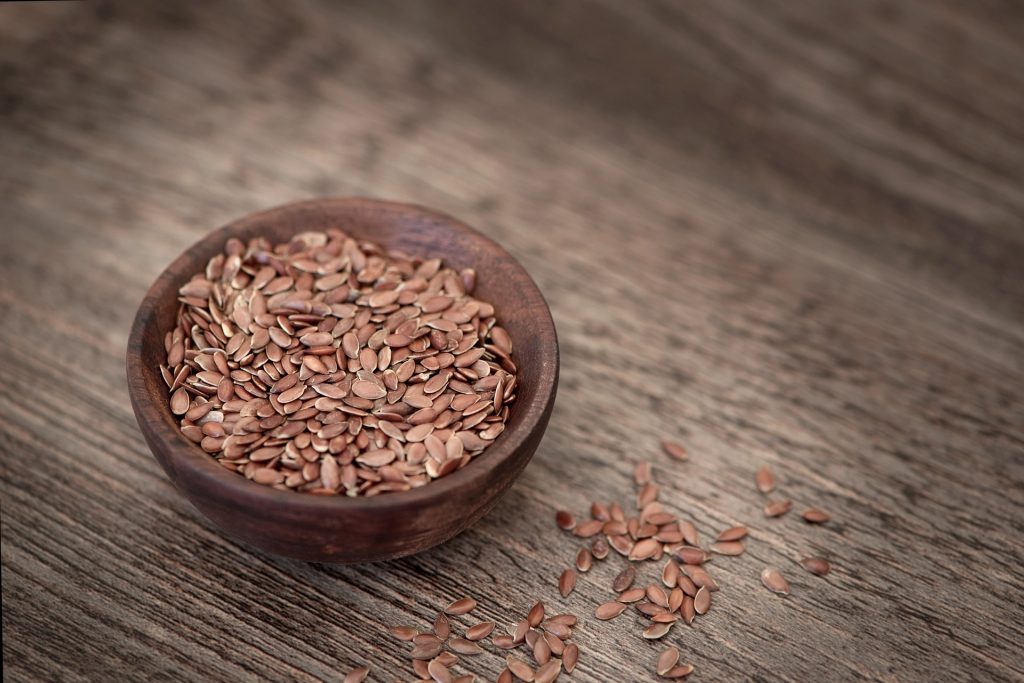 There are two essential fatty acids in human nutrition. Alpha linolenic acid (ALA, C18:3 (n-3)) is the essential fat the belongs to the omega-3 family of fatty acids, and linoleic acid (LA, C18:2 (n-6)) is the essential fat that belongs to the omega-6 family of fatty acids. These two fatty acids are required in a ratio of roughly 1 gram of ALA for each 3 grams of LA. Most Westerners have too much LA in their diet and too little ALA and as a result their health can suffer through an accumulation of inflammation. The solution to this is to consume more omega-3 fatty acids, and for this reason many turn to supplements of ALA in order to redress the imbalance. Flax seed oil for example is a rich source of ALA, and provides 3 grams of ALA for each 1 gram of LA. Therefore flax seed oil is a useful supplement in order to provide an increasing amount of beneficial omega-3 fatty acids. For many, this approach is enough to balance essential fatty acid intake and maintain an overall anti-inflammatory effect.
There are two essential fatty acids in human nutrition. Alpha linolenic acid (ALA, C18:3 (n-3)) is the essential fat the belongs to the omega-3 family of fatty acids, and linoleic acid (LA, C18:2 (n-6)) is the essential fat that belongs to the omega-6 family of fatty acids. These two fatty acids are required in a ratio of roughly 1 gram of ALA for each 3 grams of LA. Most Westerners have too much LA in their diet and too little ALA and as a result their health can suffer through an accumulation of inflammation. The solution to this is to consume more omega-3 fatty acids, and for this reason many turn to supplements of ALA in order to redress the imbalance. Flax seed oil for example is a rich source of ALA, and provides 3 grams of ALA for each 1 gram of LA. Therefore flax seed oil is a useful supplement in order to provide an increasing amount of beneficial omega-3 fatty acids. For many, this approach is enough to balance essential fatty acid intake and maintain an overall anti-inflammatory effect.

Both fish oils and flax oils supply omega-3 fatty acids. However, while fish oils contain the long chain marine fatty eicosapentaenoic acid, flax oil contains the plant based alpha linolenic acid. Both fatty acids can be effective at balancing essential fatty acid ratios, but for some fish oil is the prefered source as it bypasses a common enzyme deficiency. Consuming both flax oil seed and cold water fish can supply good amounts of omega-3 fats of both types. Walnuts are also a good source of alpha linolenic acid.
However, for ALA to be effective, there must be a conversion of the ALA to eicosapentaenoic acid (EPA, C20:5 (n-3)). However, for some this metabolic pathway is not efficient and this relates to a deficiency in synthesis of the delta-6 desaturase enzyme. To overcome this EPA can be taken directly in the form of fish oil supplements or through consumption of cold water fish. Cold water fish such as trout, salmon, tuna, mackerel and sardines all contain high amounts of EPA, and this is absorbed by humans and can directly enter the ALA essential fatty acid pathway. This circumvents the delta-6 desaturase enzyme and the result is that a more efficient supply of omega-3 fats can be obtained. Fish and flax oils are highly prone to oxidation and so any ALA or EPA consumed must be from a fresh source. Choosing between ALA and EPA really depends how well the ALA is metabolised and this can only really be understood through trial and error. In addition, omega-6 fat intake should be minimised if they are being consumed to excess.
Eat Well, Stay Healthy, Protect Yourself
RdB
